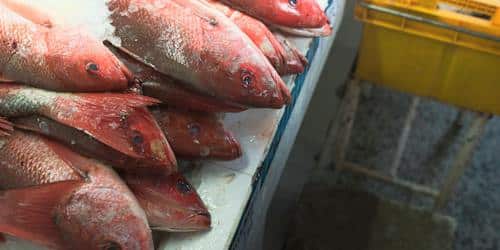Starting a frozen food business may be an exciting and rewarding undertaking if you have a passion for frozen food, a thorough understanding of the market, and a drive to transform your enthusiasm for frozen food into a business. We’ll lead you through the process of beginning a frozen food business, from formulating your concept to creating a professional business website, and providing you with vital insights to help you thrive in this fast-paced sector.
The frozen food market has grown significantly in recent years, owing to changing customer lifestyles, convenience, and a greater emphasis on nutritious and high-quality food options. Starting a frozen food business allows you to enter this flourishing sector and provide items that meet the requirements and wants of people seeking convenient and delicious frozen meals.
What is a Frozen Food Business?
A frozen food business involves the production, packaging, and sale of various frozen food products. This sort of business sells frozen meals, snacks, sweets, veggies, fruits, and other products. The trick is to choose a frozen food sector niche that matches your hobbies, expertise, and target market.
Why Start a Frozen Food Business?
There are various prospects for entrepreneurs to develop profitable enterprises in the frozen food market. Here are some compelling reasons to launch a frozen food company:
#1. Growing market
Global demand for frozen food is increasing as customers seek quick and time-saving meal options without sacrificing quality or nutrition. The expanding market provides numerous opportunities for innovative enterprises to prosper.
#2. Ease of use and accessibility
Frozen food offers consumers convenience by allowing them to prepare quick and easy meals without the need for substantial preparation. With hectic lifestyles becoming the norm, frozen food provides a solution for people looking for quick and tasty meal options.
#3. Nutrition and health
The majority of individuals want to eat healthy and are looking for healthier options, including frozen foods. You may tap into the growing demand for healthier frozen food options by focusing on high-quality products, nutritious recipes, and catering to specific dietary preferences or constraints.
#4. Broad target market
Frozen food appeals to a diverse group of consumers, including busy professionals, families, students, and people with special dietary requirements. You can cater to the distinct interests of different consumer groups by targeting specialized market segments such as plant-based meals, gluten-free alternatives, or ethnic cuisines.
How to Start a Frozen Food Business
A frozen food business takes careful planning, research, and execution. Here are a few key stages to help you through the process:
#1. Create a concept for your frozen food business.
Clarify your goal and select the precise niche or section of the frozen food market on which you wish to concentrate your efforts. Choose whether you want to sell frozen meals, snacks, desserts, or specialty frozen food items. To improve your concept and identify unique selling features, research your target audience, competition, and market trends.
#2. Have a Business Plan
Generally, any firm, no matter how little, must have a plan. Many factors come into play when planning your business. This is the time to conduct a complete feasibility analysis on the business. You should be aware that there is competition. There are currently people in the business, and more are likely to join when you start.
So your plan should be twofold: one for survival and one for growth. Seek professional help if the business concept is unclear to you. Alternatively, look for an already progressive person in the same industry and make queries. A business plan, in general, includes everything that will be required for the targeted firm, from start-up to progressive growth to a large business.
#3. Raise Your Business Capital
This is critical, especially if you plan to run a one-man show. Before beginning anything, such as a business venture, money must be set aside for it. The scale you begin with is decided by the quantity of funds you have available. You can raise startup financing in a variety of ways.
Also, keep in mind that certain fees will be incurred as the firm grows. Aside from the acquisition of equipment and the stocking of refrigerators, you will want funds for maintenance and operating charges.
You must examine all of these factors while raising startup finance. Make a budget that will cover your expenses after setup. It will take at least three months to grow your customer base before you begin to notice a significant profit.
#4. Select a Suitable Location
Because of the degree of consumption of the commodity involved, some businesses grow more in specific areas. Study the location in which you want to locate the firm and be able to anticipate what the business’s turnover will be in a year or two.
If the profit is pitiful, consider selecting a different site that might be more ideal for your frozen food business. Because of the early costs, most businesses do not make a lot of money in the first two years. However, if it is successful, a peek of survival will be shown within months.
As a result, don’t be too hasty to disregard the location of your business because it isn’t working as well as you planned in the first few months.
#5. Register With The Relevant Association
It is common knowledge that market unions exist. Every business line has an association that oversees its operations. Try to register with the relevant body as a new arrival for security concerns and even advise. It also protects your company because it keeps you up to date on what is going on in your industry.
Some associations may even offer credit to their members. If yours is like that, you should stick with it. You should also be aware that some associates will become a milking cow for your company, charging one levy after another; you should be aware of this before joining any organization unless it is mandatory.
#6. Increase Your Customer Base
Determine who your clients are as a new business. This will also influence the type of things sold. Red meat and chicken food can sell very well in areas where there are many growing children; however, when there are many old individuals, fish and poultry items will sell better.
In any event, figure out who your consumers are and do everything you can to attract, win, and keep them if you want to succeed in business. Remember that your consumers are the lifeblood of your company.
#7. Plan Your Storage System Carefully
When considering starting a frozen food business, one must consider storage facilities, refrigerators, and other cooling equipment. The individual’s desired scale will also determine how many of these facilities to purchase. However, it is best to start small so that the first costs do not overwhelm you.
Storage is essential in the frozen food industry. Your business’s success or failure is determined by how reliable or inefficient your storage facility is. Make an investment in high-quality refrigerators; if possible, get new ones.
When you freeze seafood and chicken, like the ones seen above, they stay fresh and nutritious until you sell them to customers.
#8. Purchase an Adequate Power Supply Generator
One of the primary issues that businesses in the country confront today is the lack of electricity. Remember that you are dealing with perishable commodities; therefore, as you begin your firm, consider purchasing a generating set for power supply. Otherwise, you will be at a loss because some of the meals may die if no power is available to preserve them.
Of course, no one wants to waste money on spoiled food. When purchasing a generator, choose one that can handle high voltage while remaining portable. It is less expensive to manage petrol-powered generators than diesel-powered generators, so choose the former over the latter.
Make a list of everything you’ll need for a start-up. And begin purchasing them in pieces. Some of such equipment is available in slightly used or less expensive but still new condition.
#9. Build You Logistics – Home Delivery
This can actually be used to bring in additional customers. Some customers prefer after-sales service, and if your company can provide it, you will have an advantage over your competition. After-sales service could include home delivery of goods purchased by your customer. It is important to note that you may not be able to accomplish this for all of your customers due to the additional costs involved in this procedure.
It is, therefore, recommended that you do this for consumers who make large purchases. When selling frozen goods, numerous delivery mechanisms are frequently used. You may choose to promote your items online and deliver them in freezer trucks, or you may choose to peddle your delicacies to businesses and homes, as well as stores and restaurants where they are required. Make available working phone numbers so that your customers may simply contact you with any questions.
Tips for Managing a Frozen Food Business Effectively
Effective management of a frozen food firm is critical to its long-term success. Here are five essential measures for efficiently managing your frozen food business:
#1. Create a distinct organizational structure.
To guarantee seamless operations, define roles and duties within your frozen food business. Assign duties, establish reporting lines, and develop a clear communication framework. Communicate your team’s expectations, goals, and performance indicators clearly.
#2. Put quality and food safety first.
Maintain strict quality control procedures throughout the whole frozen food manufacturing process. To ensure the integrity and safety of your products, ensure compliance with food safety rules, conduct frequent quality inspections, and monitor your suppliers.
#3. Establish solid supplier ties.
Establish ties with dependable suppliers of high-quality products and packaging materials. Form mutually advantageous alliances to secure a steady supply of commodities and negotiate favorable pricing.
#4. Implement effective inventory management.
Inventory management is critical in the frozen food sector to reduce loss and maximize production. To maintain a constant supply of ingredients and packaging materials, use inventory management systems, check stock levels, and set reordering criteria.
#5. Adapt to evolving consumer trends
Keep up to date on emerging consumer trends, dietary preferences, and market demands. Maintain constant innovation in your frozen food offerings to meet evolving consumer wants and preferences. Make informed business decisions by leveraging consumer input and data analytics.
Challenges of running a frozen food business
While beginning a frozen food business has many advantages, it also has its own set of challenges:
#1. Quality assurance
Maintaining frozen food product quality is critical for consumer satisfaction and brand reputation. To retain the taste, texture, and nutritional content of your frozen food items, proper storage, packaging, and shipping are required.
#2. Regulatory adherence
Various rules and food safety standards apply to the frozen food sector. It is critical to understand and follow these rules in order to maintain the safety and integrity of your products. Obtaining required licenses, complying to labeling standards, and establishing suitable hygiene and sanitation measures are all examples of this.
#3. Logistics and distribution
Managing a frozen food supply chain may be difficult, especially when it comes to keeping the chain cold and guaranteeing timely delivery. Relationships with trustworthy suppliers, distributors, and transportation partners are critical for efficient and effective distribution.
#4. Market competition
The frozen food sector is extremely competitive, with many established companies as well as new entrants competing for customer attention. In such a congested market, unique product offerings, excellent branding, and focused marketing techniques are required.
Is Frozen Food a Profitable Business?
It is the freezing, storing, and trading of frozen food items. Freezing food items technically boosts the value and shelf life of most perishable foods. In many regions of the world, including Nigeria, the frozen foods sector is a highly profitable venture.
How Long Can Frozen Food Be Transported?
Frozen meals can stay unspoiled and in perfect condition for days if they are properly prepared and packed. “Foods stored in low-quality bags last only a few hours, whereas a good one can keep food frozen for days when filled with ice.”
How are Frozen Meals Packaged?
Tin cans, cardboard, laminated paper, and flexible and stiff plastic materials are frequent possibilities for frozen food packaging. Simple shrink wraps are also used for fresh vegetables, fruits, and seasoned meat. The following are some of the most commonly used frozen food packaging materials.
Is Frozen Food High Risk?
While freezing is deemed safe for most foods, as part of fundamental frozen food safety, it is critical to maintain proper food hygiene, storage, and preparation standards once food items are defrosted and cooked/served. Undercooking or poor food handling can raise the risk of contamination and sickness.
What Materials Are Used for Frozen Food?
Containers Commonly Used for Packing Frozen Food. The most popular types of containers used to package frozen meals include plastic films, flexible plastic pouches, paperboard and cardboard, aluminium foil, expanded polystyrene foam, and rigid plastic materials.
Conclusion
To summarize, starting a frozen foods business in Nigeria is a lucrative and profitable endeavour due to the massive market need and your capacity to establish a large network. If you’re searching for a profitable business to start, the frozen foods industry in Nigeria is a wonderful place to start.
- HOW TO UNFREEZE CREDIT: The Best Way to Remove a Credit Freeze
- VENMO vs PAYPAL: Is Venmo A Better Alternative? (Detailed Review)
- FOOD BUSINESS INSURANCE: Best Food Liability Insurance of 2023 & Costs
- How to Start Food Processing Business: Complete Guide
- Venmo Account Frozen: Best 2023 Stress-free Solutions (Why is Venmo Freezing?)






